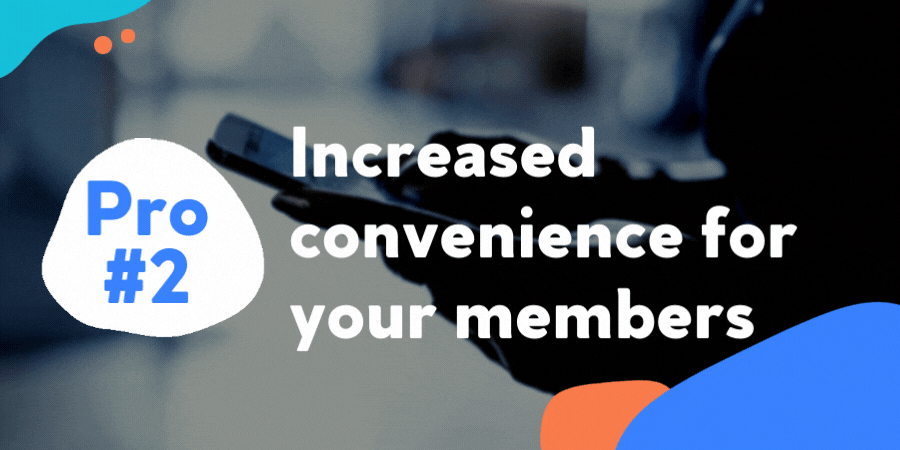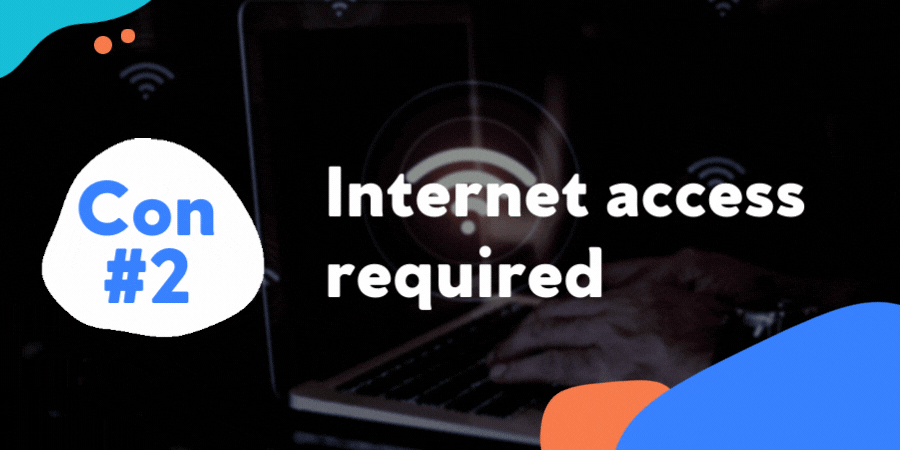Should You Be Using Digital Waivers? 3 Pros and Cons

Events can engage a wide range of your association’s members, bringing them together to improve their skills, network, and have fun. Of course, if these events include any degree of risk, you’ll need to have your attendees sign waivers beforehand. This simple process has also become complicated in recent years due to the COVID-19 pandemic, as now organizations like yours need to consider creating waivers for COVID-19 liability in addition to your usual waivers.
These circumstances have likely caused your association to reconsider its waiver process, which means now is a good time to consider if you should switch to digital waivers.
Before incorporating any new software, your association should consider the pros and cons of doing so. Online waivers come with a unique set of benefits and challenges for organizations that choose to adopt them. To help you weigh your options, this article will explore three pros and three cons of digital waivers:
- Pro 1: Easy management and organization.
- Con 1: Required training.
- Pro 2: Increased convenience for your members.
- Con 2: Internet access required.
- Pro 3: Reduced paper waste.
- Con 3: Platform fees.
These pros and cons will have different levels of importance for different organizations based on a variety of factors, including size, budget, and location. Take note of which factors will have the largest impact on your specific organization to make the right decision for you. Let’s get started!

Pro 1: Easy management and organization.
Sorting through stacks of paper waivers is rarely the easiest system for your staff. By contrast, digital waiver platforms come with paperless organization systems that can all easily be managed from a single computer, rather than a file cabinet.
Here are a few specific features that make digital waivers easier to manage and can help you stay organized:
- Searchable databases. Finding a single, specific waiver in a stack can be overly time-consuming, and this situation will only occur more frequently as your organization grows. With digital waivers, your staff members can enter a name into a database and find what they’re looking for immediately.
- Automatic updates. When one of your event attendees signs up and completes a waiver, it will automatically be sent to your waiver database, eliminating the need to distribute and collect waivers manually.
- Few logistics concerns. With digital waivers, there is no need to be concerned about maintaining a physical storage system or worry whether your staff printed up enough physical waivers ahead of time. Plus, with COVID-19 concerns, paper waivers will also require you to consider your pens and how you’ll sanitize them between uses, which won’t be a concern with a digital solution.
These organization benefits can also make your registration process easier for your members. A member can submit their waiver virtually from their home and check up on its status at any time.

Con 1: Required training.
Whenever your organization adds a new software solution to your tech stack, you’ll need to spend time training your employees how to use it. This holds true for digital waiver platforms, though user-friendly solutions will strive to be more intuitive and provide reliable customer support.
Before committing to digital waivers, be aware that the needed training, even for simple systems, may result in temporary slow downs as your staff adjust to the new platform. Additionally, you’ll need to work training for how to use your digital waivers into your onboarding for new hires.
Remember that there are also a wide range of waiver solutions available, from sports liability waivers to waivers that cover salons, spas, tour groups, and more. When you choose a waiver solution, make sure that it’s the right fit for your organization to avoid having to switch platforms and re-train your employees.
However, with COVID-19 liability waivers, you may need to walk your employees through additional training anyway to set up how you require and make note of your attendees’ proof of vaccination or negative test requirements. In this situation, teaching your staff to use your new waiver system might just be one additional step in a training process you already intended to launch, rather than an entirely new process.

Pro 2: Increased convenience for your members.
Traditional waivers have a few limitations, such as the need to physically distribute and collect them. However, digital waivers can overcome these obstacles and provide added convenience for your members that you might not have previously considered. These benefits include:
- Access to waivers ahead of time. Guests won’t need to wait until they’re at your organization to complete their waiver. Instead, they can go to your association’s event page and fill out a copy when they first register.
- Increased transparency. When using paper waivers, your event participants fill one out and then turn it into your organization. This means your guests will no longer have access to the waiver, unless they specifically request a copy. With digital waivers, they always have a copy of their signed waiver available.
- Contactless options. With concerns over shared surfaces and objects such as pens and clipboards, digital waivers offer a helpful contactless option. Even walk-in registrants can submit their waiver through their phones to prevent unnecessary health risks.
Additionally, updating and distributing waivers is easier when using a digital platform. While you will still need to consult with your lawyer and insurance company when creating your waiver, there will be no need to print and mail new copies.

Con 2: Internet access required.
Online waivers require access to the internet, and if that connection is not guaranteed, you will likely need traditional waivers as a backup to your online system, no matter how determined you are to use digital waivers. This situation can apply to any event in the countryside, such as races and events hosted on nature trails, forest adventure parks, lakesides, and more.
Additionally, while an online system can circumvent many common problems with waivers, like having issues reading handwriting, they are not immune to human error. These types of problems can be especially difficult to troubleshoot when using a software solution, as they can’t simply be crossed out and corrected. If you use digital waivers, be prepared for the following situations:
- Failure to submit. Sometimes your event attendees will not be able to submit a waiver due to technical issues on their end or just making a mistake and failing to hit the submit button. This can be an especially difficult situation if you also do not have reliable internet access where you are hosting your event.
- Incorrect information. Typos and misunderstandings happen, and your participants may accidently enter important information incorrectly. With digital waivers, these issues can make it more difficult to search your database and may even lead to reduced data hygiene.
- Distrust of online waivers. While online waivers are equally as valid as their paper counterparts, you may still encounter individuals who have a strong preference for traditional waivers and hesitate to sign an online waiver on principle.
Digital waivers can still benefit organizations with more spotty internet access, but these organizations will need to have paper waivers on hand to accommodate walk-in guests or those experiencing technical difficulties.

Pro 3: Reduced paper waste.
If your organization is environmentally-minded, you might be concerned about the sheer number of waivers you have to print for each event. Plus, as your organization grows and your events become more popular, this problem will only increase.
Digital waivers do away with paper waste, providing a more environmentally-friendly alternative to traditional waivers. A lack of physical copies can also help your organization’s offices stay more organized, as you won’t need to worry about having the space to store all of your waivers.
Additionally, given that today many organizations are pivoting to online and hybrid tools for most activities, from how events are hosted to their overall organization system, it makes sense to transition your waivers online, as well to create one, unified system.

Con 3: Platform fees.
Digital waiver platforms are rarely free, and most operate on a subscription basis. This means you will need to factor your software’s monthly or annual fees into your overall budget before investing in an online waiver platform.
Software prices will vary depending on what service you use, as well as how many waivers you will need each month. For example, if your association only runs one event a month, you may be able to use only a low-cost 100 waivers per month subscription plan.
However, the subscription model can also lead to your association potentially spending money on waivers you are not using. For instance, if you have a monthly waiver subscription service, but only host events that require waivers every other month, you will still need to pay your monthly fee.
Researching and transitioning to a digital waiver system is an investment of your association’s time and money. Ensure you are making the right choice by evaluating if digital waivers can meet your specific event needs and outweigh potential drawbacks.